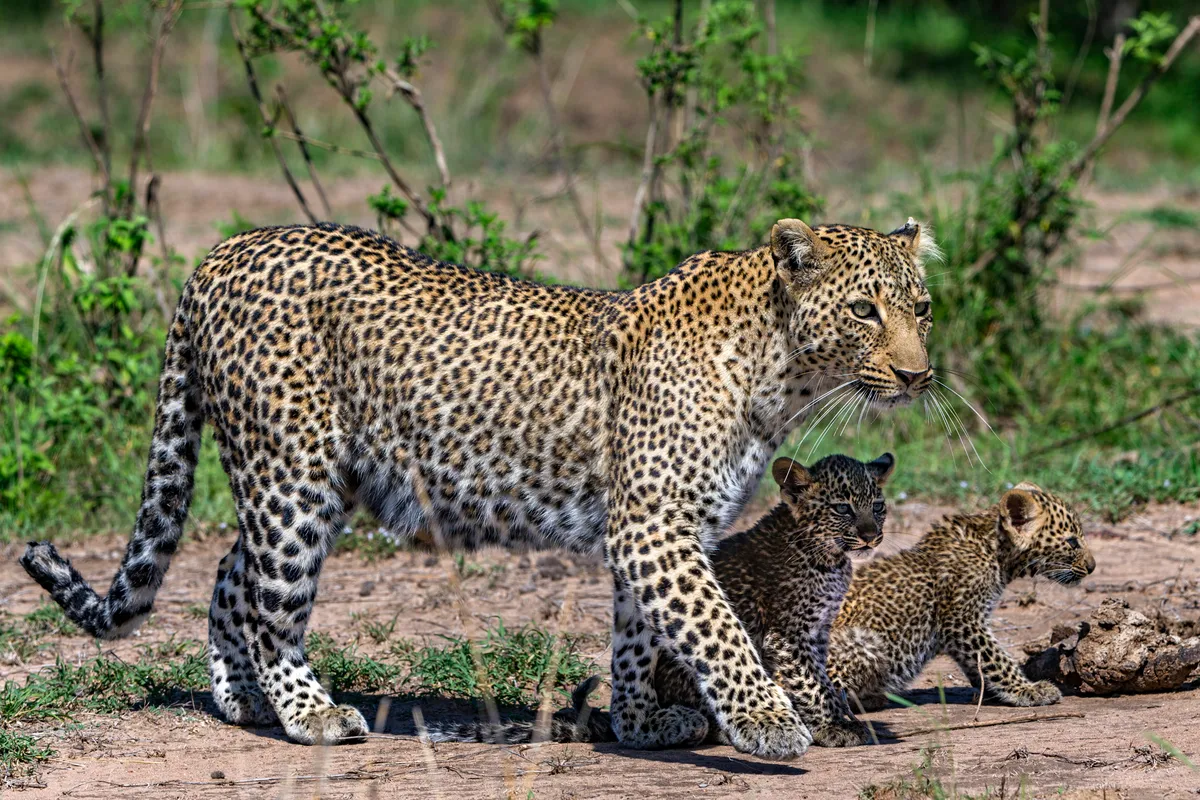People never tire of watching big cats. Testament to this was Big Cat Diary - and later incarnations Big Cat Week and Live - the much-loved and long-running BBC series that from 1996-2008 offered a jeep's-eye view of the plains of Kenya's Masai Mara.
A decade since the format was retired by the BBC, the cats are back in a new series for Animal Planet, fronted once again by the 'Big Cat People' Jonathan and Angela Scott and Jackson Looseyia.

Big Cat Tales picks up the story of the larger felines of the Masai Mara in Kenya, including what happened to Charm after BBC's Dynasties stopped filming.
Why are you still watching and filming these big cats?
Angela (A): Following the cats everyday reveals their characters and brings them alive. We have the real privilege of watching the cats day in and day out, which allows us to see their idiosyncrasies.
Jonathan (J): It's only by investing years that you get to know them. We started following these cats back in the 1970s. There are a lot of programmes on TV focussing on nature which is 'red in tooth and claw', but in Big Cat Tales we didn't want to do that. We try to go beyond the dramatic action scenes to give a more rounded portrayal of these animals.
A: The life of cats is quite different to how it appears on TV. It's so peaceful, calm and quiet out in the bush, with cats just getting on with their lives. Not as portrayed by many programmes, with loud music as they run across the plains.

J: Animal stories are still at the heart of the programmes, but this is not a repeat of Big Cat Diary. Tales also reflects our lives on safari, doing what we've done since moving to the Mara in 1977, with input from our co-presenter Jackson Looseyia about what it is to be a Maasai.
Watch a clip from Big Cat Tales:
Please note that external videos may contain ads.
Will viewers recognise any of the cats?
J: The cats in Tales are the daughters and their offspring from the Diary cats. Bahiti the leopard is granddaughter of Bella, and Malika the cheetah is likely related to Kike, the car-jumping female that pooped on me in 2003; and of course there's the Marsh pride, recently filmed by the BBC for Dynasties. Our new series follows what happened to Charm and her cubs after she was driven off her territory by another pride.
Watch a clip from Big Cat Tales:
Please note that external videos may contain ads.
Do you have favourite species?
A: We both love all the cats, but I do gravitate towards the lions. They have a very matriarchal society, and rely on the strength of the sisterhood. You can learn so much from them.

J: I'm fascinated by leopards because they are much more elusive. When I first moved out here, I only saw two in one year as they are so difficult to see.
What are your favourite moments from the new series?
J: Spending time with the leopards and watching the interactions between mothers and their cubs. It's been a joy to watch Bahiti with her cubs, playing with them and teaching them.

A: I have really enjoyed watching the lions. It's been particularly special as the Marsh pride male, Askari (which means 'Guard'), has loved the cubs. Usually the males leave the females and cubs alone for most of the time, but he would let the cubs play with him. I haven't been around a male like that for around ten years.

There's also been the amazing opportunity to watch an unusually large cheetah coalition of five males. Two pairs of brothers have teamed up with another single male and they've been hunting big animals such as wildebeest and topi.

Watch a clip from Big Cat Tales:
Please note that external videos may contain ads.
What challenges have you faced recently?
J: It can be difficult to balance tourism whilst not stressing the cats, and we believe there needs to be increased regulation, and briefing by safari lodges, especially when it comes to providing space for hunting cats and for mothers with cubs.
What threats are currently facing big cats across Africa?
J: They are facing a wide range of threats including loss of landscape as human populations expand, conflict with people when the cats predate livestock, loss of prey through the bushmeat trade, the trade in cat body parts, and the illegal trade of exotic pets - particularly for the Middle East where cheetah cubs cost $10,000 each, and 70 per cent of the smuggled cheetah cubs die in transit.
Big Cat Tales air on Animal Planet on Sunday evenings between 10 March until 7 April.
